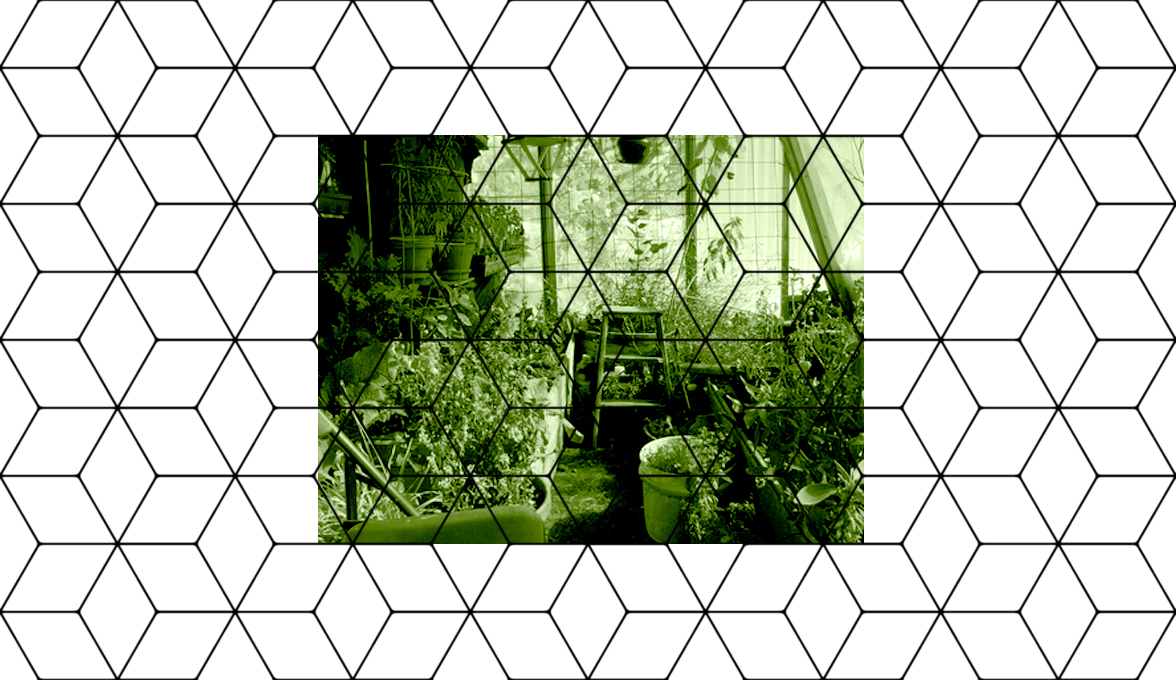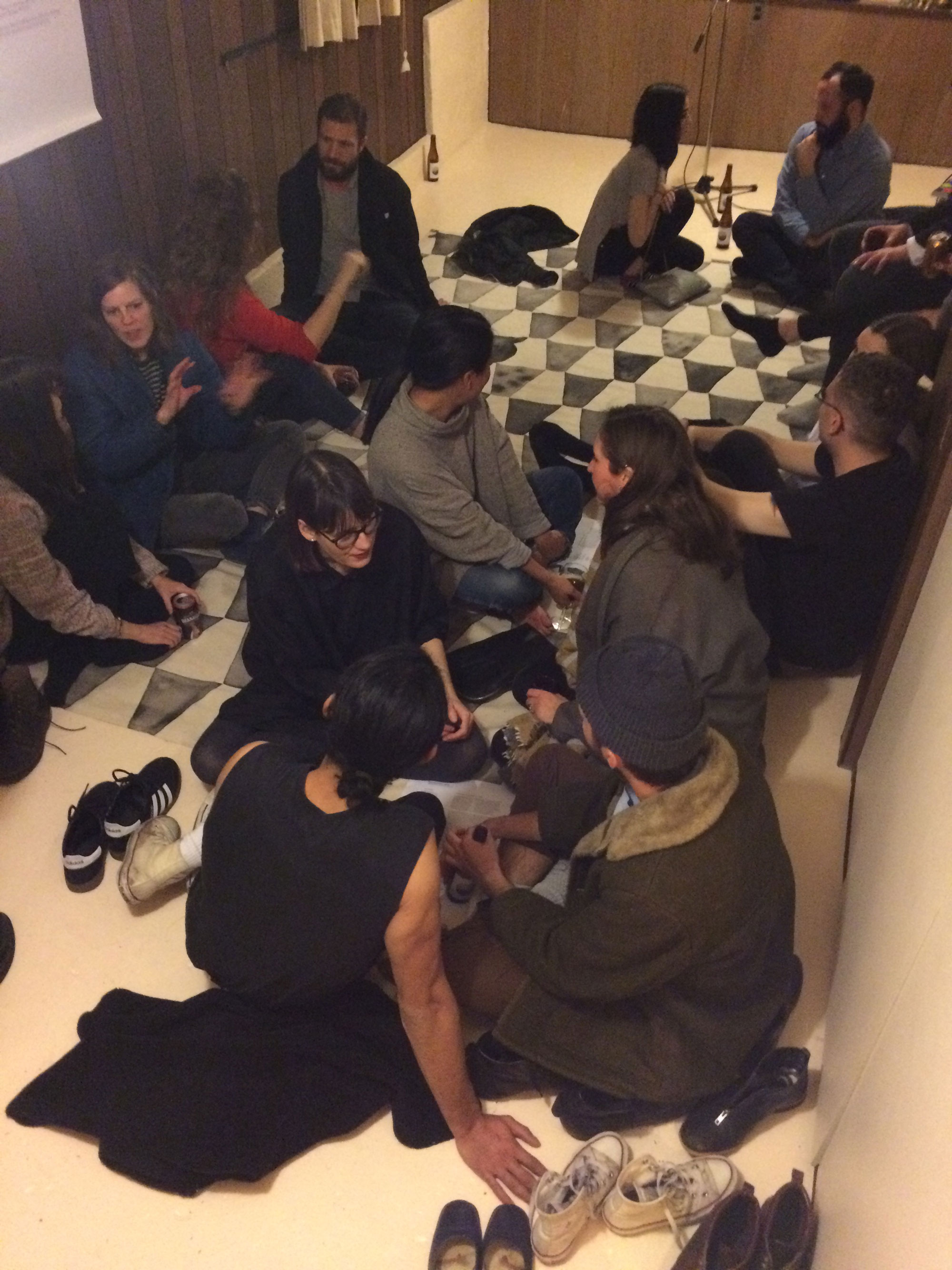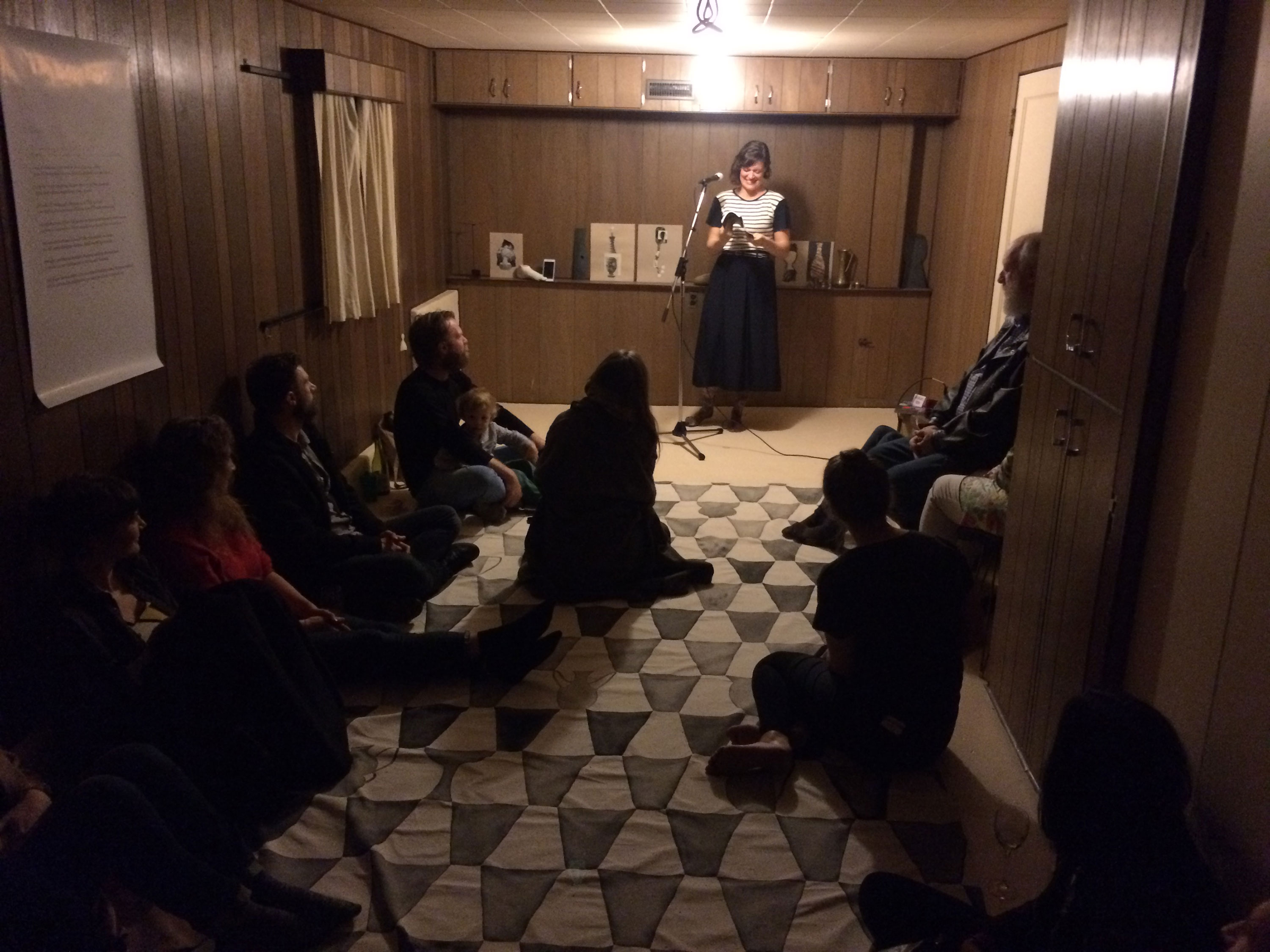Plane, pot, pattern, repose
Vanessa Brown & Sheryda Warrener
Exhibition date:
February 20, 2016, 7-10pm
Opening reception,
and reading:
February 20, 7-10pmHAUNT presents Plane, pot, pattern, repose featuring a large-scale canvas work by Vanessa Brown and poetry by Sheryda Warrener. The event is the second in a series of interdisciplinary exhibitions taking place in a home basement space on Glen Drive in Vancouver, Canada.
Vanessa Brown works in sculpture, painting and photography and is based in Vancouver on unceded Coast Salish Territories. She graduated with a BFA from Emily Carr University in 2013 and was the recipient of the Chancellor’s Award. She has exhibited in Canada and in Germany. Her recent exhibitions include Quoting the Quotidian at Wil Aballe Art Projects, The Oasis at FIELD Contemporary, Visitors at Gallery 295 and Walking and Falling Falling and Walking Walking and Falling at Erin Stump Projects.
Sheryda Warrener is the author of two poetry collections, including her debut Hard Feelings (Snare/Invisible, 2010). Her work has been shortlisted for the Robert Kroetsch Award for Innovative Poetry, the Arc Magazine Poem of the Year, the Malahat Review Long Poem Prize, and was a runner-up for Lemon Hound’s inaugural poetry contest. She lives in Vancouver, where she teaches at the University of British Columbia.
“Vanessa Brown: Plane, pot, pattern, repose” by Lucien Durey
Once an indigenous trail, once a colonial wagon road. This hundred-year-old house was built on a heterogeneous glacial deposit of clay, silt, sand and stones, shortly after Kingsway was paved. The concrete floor: a daddy longlegs’ stomping ground, poured around the mid-seventies, cruel to falling glassware, sloping westward. We painted the gallery portion “Cat’s Paw” some months ago to cover its battered grey, which was consistent throughout the basement save for the outlined shape of a single bed in the northeast corner. A mattress evidently held by built-in platform, or perhaps just very heavy, now somewhere among other outmoded features that have been removed: cupboards, closets, carpets. Near the alley door, where the wood paneling abruptly ends, the electrical outlets are labeled on the breaker box as Freezer 1 and Freezer 2. Teenage bedroom, entryway, cold storage. Quite cold: concrete that stays cool on hot summer nights—a room that demands slippers.
Vanessa Brown’s Plane, pot, pattern, repose considered most practically, is a reprieve from chilled cellar for stockinged feet. A painting and an area rug, it asks us to admire and make use of it, the first of its several oppositions. From a distance, full views of a tessellating pattern are interrupted by the work’s functionality as a surface for reclining bodies. Up close, with the rug under us, we stare into milk-in-coffee patterns of acrylic ink on raw canvas. It’s a precarious terracotta pot stack, tilting slightly, yet laid out gently—a painting in repose. Amphora, chalice and oinochoe shapes discovered amidst ubiquitous flat-bottom flower vessels: like finding George Ohr ceramic works buried on the shelves of a home and garden centre. Most importantly, a site, created with the explicit purpose of hosting live events. Tonight, a reading by Sheryda Warrener from her new book of poetry, Floating is Everything, calls us up from basements, through telescopes, hurling us outward toward asymmetric spiral galaxies. In a few weeks, an interactive performance with tuned handbells by Vanessa Brown will be a lounging and listening event. At exhibition close, we’ll fold the space, place it into a box for storage—once gathering page, now unfolding, occasional spot.
“THIRTEEN WAYS SHERYDA’S FLOATING WAS EVERYTHING” by Kayla Czaga
A SUDDEN GUST
I
Under the high school basement’s lazy fluorescence, the most fluttering thing was Sheryda’s winning personality.II
I cried three times during Sheryda’s poem about the curious baby and Ski-Dooing into the easygoing Arctic.III
The kitten never recovered being covered in duct tape. Thanks Sheryda—I’ll never forget that.IV
The city isn’t the city without its light. Sheryda’s city rotated inside its simple shadow.V
I do not know which to prefer, the poem about a photo about a painting or the poem about Pluto ft. Morrissey—Sheryda whisking images into impressive meringues.TRACE OBJECT
VI
The dust in this poem is the skin of still-living relatives. That’s why we’re always so sad, right? We breathe it in. In this poem, Sheryda got the German wrong. I’m sorry, Sheryda, grandmothers are difficult to impress.VII
In the left circle, baby is crying, inconsolable. In the right circle, we are dancing in Japan and will never be sad again, little paper hat. Sheryda’s book is that thin space where the circles overlap.VIII
I’m banking on you living forever, too, Sheryda.LONG DISTANCE
IX
It doesn’t mean to brag, but Sheryda’s poem survived the volcano by inhaling a geological age of ash and staring at little photos in the basement of the National Gallery of Iceland.X
In the middle of the bath, Yoko Ono might call you. Quit making me cry, Sheryda. I have some chores I need to do later, my own set of mortal humans to attend to.XI
Some time later, you’ll see a light streak across the sky, which is what Sheryda’s poems do inside of you.XII
[This space is intentionally left blank. Under no circumstances may you doodle imaginary renderings of outer space in it. I’m speaking to you, Sheryda.]XIII
When you wrote, “Today is made of a million silver hooks perturbing the sky,” I stopped breathing. Drive home with your father, small poem, to the motherland. Find that Sheryda thing beyond seeing to cling to.Viewable at:
HAUNT basement
(entrance in yard)February 20,
7-10pm and
by appointment
HAUNT is a non-profit arts entity that embraces inventive and transitory platforms. We produce exhibitions, texts, performances, special projects and public events in Vancouver and beyond.



